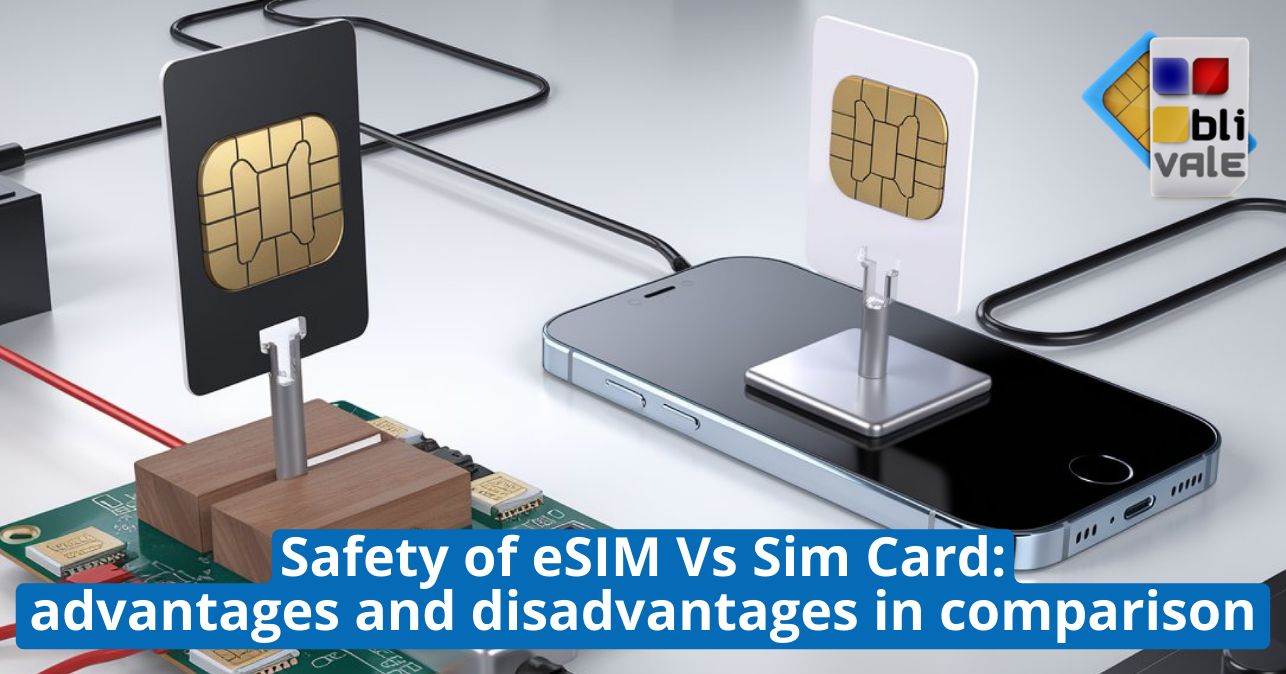Security is a crucial aspect for both eSIM (embedded SIM) and traditional SIM cards. Both technologies have specific advantages and disadvantages in terms of protecting user data.
In this article, we'll explore the pros and cons of each solution in detail, to help you understand which one might be the best choice for your needs.
Furthermore, we will see how BLIVALE stands out in the market by offering both international SIM Cards and eSIMs in free roaming, with a variety of plans to suit different connection needs.
SIM Card: Advantages and Disadvantages in Terms of Security
Advantages of SIM Cards
Removability : In the event of suspected fraudulent activity, the SIM can be physically removed from the device and deactivated by the operator. This offers some level of control and immediate action.
Visibility : The physical presence of the SIM makes a tampering attempt more obvious. It is easier to detect any tampering than with an integrated solution such as the eSIM.
Disadvantages of SIM Cards
Physical Vulnerability : SIM Cards can be easily damaged, lost or stolen. This makes them more vulnerable to potential theft or loss.
Cloning : Although more difficult than in the past, cloning a SIM card is still possible. This poses a security risk.
eSIM: Advantages and Disadvantages in Terms of Security
Advantages of eSIMs
Device Integration : Since it is integrated into the device, the eSIM is less susceptible to physical damage or theft. This makes it more physically secure.
Remote Management : Operators can remotely deactivate or block an eSIM in case of suspected fraudulent activity. This provides greater control and responsiveness in case of problems.
Multiple Profiles : The ability to create separate eSIM profiles can limit the exposure of sensitive data if a single profile is compromised.
Disadvantages of eSIMs
Device Vulnerabilities : The security of the eSIM is closely tied to the security of the device itself. If the device is compromised, the data on the eSIM may also be at risk.
Software Dependency : eSIM security also depends on the device and operator software, which may have vulnerabilities.
Hijacking : There is a risk that an attacker can "hijack" an eSIM to another device, taking control of it.
Synthetic Comparison
To summarize the main differences in terms of security, here is a comparison table:
BLIVALE: The Solution for Global Connection
BLIVALE stands out in the telecommunications landscape for its diversified offering of both international SIM Cards and eSIMs, designed for free roaming.
Available Plans
Data Plans : Ideal for those who want to surf without limits. Connect wherever you are!
Voice & Phone Plans : Perfect for those who need calls in addition to browsing. Stay connected with friends and family!
Data, Voice and Phone Number Plans : Get a local number wherever you go, without compromising on quality. Make yourself heard!
Unlimited Data Plans : Don't worry about limits! Surf to your heart's content with our unlimited plans.
Regional or Global Plans : Choose whether you want to connect only in a specific region or everywhere in the world. Tailor your experience to your needs!
Toll Free Number Plans : Give your customers in some countries the opportunity to call you at no cost to them and at no cost to your company. Answer wherever you are in the world in free roaming. Adapt your experience to your needs!
Conclusions
Both SIM Card and eSIM technologies have their own security risks and benefits. The choice between the two depends on several factors, including the type of device, usage habits, and security measures adopted.









